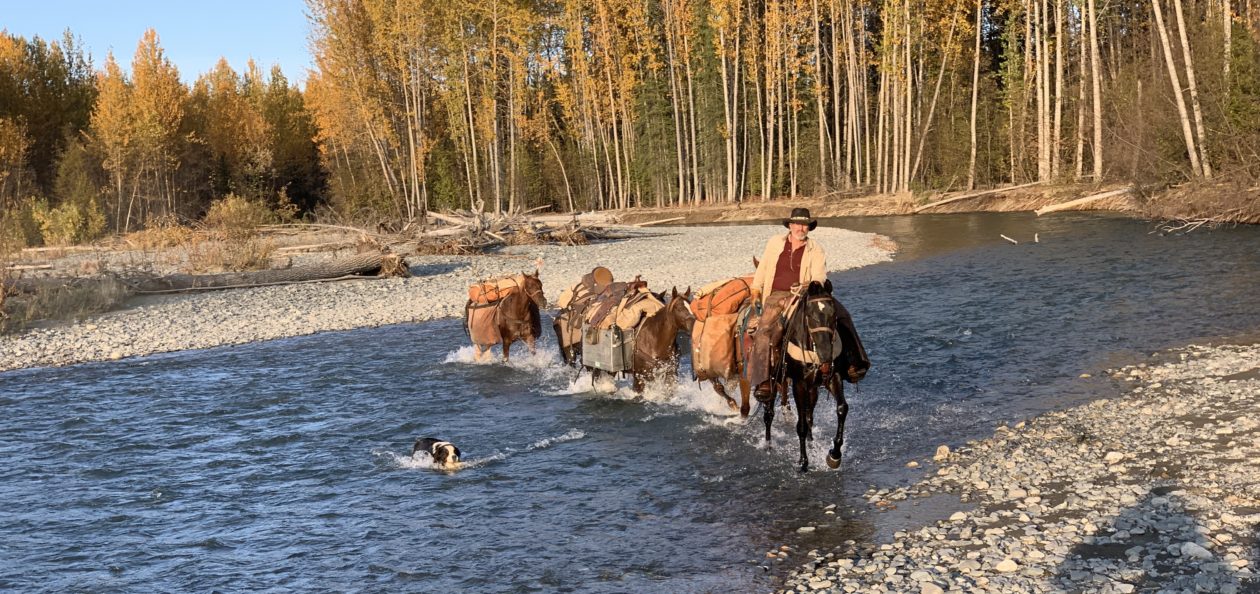Way back when Dad and I first started talking about taking a horse pack trip from Tucson, Arizona to Panguitch, Utah, I think it was in about 1975, there was no such thing as a cellular telephone, much less a Global Positioning Satellite system. In fact, the closest thing we had available to a cellular telephone was a “walkie-talkie”, that might have a useful range of about 5 miles, at best. Battery life on those was indefinite….as long as you brought along an inexhaustible supply of spare batteries! I don’t recall that we had re-chargeable batteries available at that time. And do you remember Kodak Instamatic Cameras?
Back then, when we talked about the trip, our main consideration was simply to get “from here to there”, so to speak. We thought about things like food supplies, horses, and gear. The gear consisted of Dad’s old pack saddle outfits, our own well-used saddles, and a bit of camping gear. When we thought of the trip, it was like going back in time to the late 1800s, or maybe the early 1900s. Planning was simple, complications were few. We just couldn’t get our act together to actually do the trip.
Now that we’re finally ready to give our big pack trip a real try, things are a bit different in the modern world. In particular, we’re both much older now. That brings in a whole new set of concerns and complications in itself, but that’s just the tip of the iceberg. We now have technology to deal with that didn’t even exist way back when.
Now, we have these great gadgets that can not only tell us exactly where we are in the world, both in time and space, but can also take pictures to prove it! Not only that, but these same gadgets can also tell the rest of the world where we are at the same time! And, if that’s not enough, I can actually communicate with anyone I choose, anywhere in the world, via satellites in outer space! Dick Tracy, eat your heart out!
My, how times have changed!
Still, all these gadgets use electricity. All of them have internal rechargeable batteries. All of them require special cables and chargers to keep them useful for anything other than paper weights. Now, horses generate a lot of “gas”, but no electricity, as far as I know.
So, now, the big question is, how long will these gadgets stay alive without a recharge? Most of them will handle one full day, as long as I don’t play with them too much. My iphone 6 will last about half a day if I take a lot of pictures and start texting them to my wife and mother. I took the Delorme InReach Explorer out for a test ride yesterday. We were out for about 4 hours, tracking the whole ride, and it ended up with over 85% battery remaining. I plan to take along a GoPro3 camera, but haven’t purchased it yet, so I have no idea about it’s capabilities, battery-life-wise, but I imagine it is a matter of hours, not days.

Since our pack trip will take somewhere between five and seven weeks….we think…. and since most of the time we will be far away from the nearest electrical outlet, our only option is to take an electrical source with us. Hauling a generator and the fuel to run it is out of the question.
Enter the GOAL ZERO Nomad 13 Solar Panel.
The Nomad 13 is a pair of solar panels, measuring approximately 10.5 X 7 X 1 inches, about 23 inches wide when open, and comes in its own zippered protective case with the solar panels built-in. You simply unzip, then open it like a notebook. According to the specifications on the box, the unit will produce up to 13 watts of electricity. That is sufficient to put out 5V, 0-1A (5W) regulated for USB charging, or 13-15 VDC, 0-1A (13W) unregulated for 12V charging.

It has several cables built into the unit, on the back side, including a USB cable, a Guide 10 cable, and two cables for chaining units together and for charging other GOAL ZERO rechargers, such as the venerable Sherpa. Also included is an adapter cable with a cigarette lighter-type connector for 12V accessories. The literature inidcates this unit, placed in full sun, will recharge a “smart phone” in one to three hours. Not that it will matter to us, but just for information, the unit will charge a Sherpa 50 in six hours, which will then charge a laptop computer in two hours.
I’m going to have to consider buying a Sherpa 50 for the trip, due to all the gadgets we’ll have along. Having the portable recharger along would certainly help if we should have a couple days of cloudy weather. Our plan is to strap it to the top pack on a pack horse and let it charge all day long. We’ll see how durable it is as we go.
At $159.99, it was an expensive accessory for us, but if it will do what it says it can do on the box and in the manual, it will certainly be worth the expense to us, as well as our loved ones left at home and our friends following us via the Internet. The GOAL ZERO Sherpa 50 Portable Recharger runs $249.99.
I haven’t yet had a chance to test this unit, but I expect to do so in the next week or so. That test will probably determine whether I go the extra expense for the Sherpa 50.
Stay tuned!


You must be logged in to post a comment.